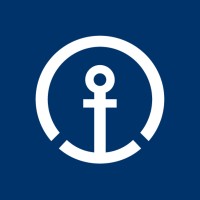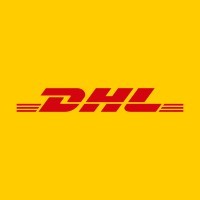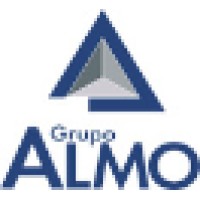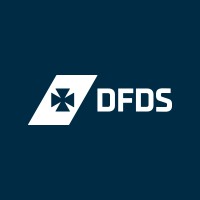
Kuehne+Nagel Company Cyber Security Posture
kuehne-nagel.comWith over 80,000 employees at almost 1,300 sites in close to 100 countries, the Kuehne+Nagel Group is one of the world's leading logistics providers. Headquartered in Switzerland, Kuehne+Nagel is listed in the Swiss blue-chip stock market index, the SMI. The Group is the global number 1 in air and sea logistics and has strong market positions in road and contract logistics. Kuehne+Nagel is the logistics partner of choice for 400,000 customers worldwide. Using its global network, logistics expertise and data-based insights, the Group provides end-to-end supply chain solutions for global companies and industries. As a member of the Science Based Target Initiative (SBTi), Kuehne+Nagel is committed to sustainable logistics by reducing its own environmental footprint and by supporting its customers with low-carbon logistics solutions.
Kuehne+Nagel Company Details
kuehne-nagel
47270 employees
1269920.0
none
Transportation, Logistics, Supply Chain and Storage
kuehne-nagel.com
57
KUE_1991050
In-progress
Between 600 and 700
This score is AI-generated and less favored by cyber insurers, who prefer the TPRM score.
 Kuehne+Nagel Global Score
Kuehne+Nagel Global Score.png)

Kuehne+Nagel Company Scoring based on AI Models
| Model Name | Date | Description | Current Score Difference | Score |
|---|---|---|---|---|
| AVERAGE-Industry | 03-12-2025 | This score represents the average cybersecurity rating of companies already scanned within the same industry. It provides a benchmark to compare an individual company's security posture against its industry peers. | N/A | Between 600 and 700 |
Kuehne+Nagel Company Cyber Security News & History
| Entity | Type | Severity | Impact | Seen | Url ID | Details | View |
|---|
Kuehne+Nagel Company Subsidiaries

With over 80,000 employees at almost 1,300 sites in close to 100 countries, the Kuehne+Nagel Group is one of the world's leading logistics providers. Headquartered in Switzerland, Kuehne+Nagel is listed in the Swiss blue-chip stock market index, the SMI. The Group is the global number 1 in air and sea logistics and has strong market positions in road and contract logistics. Kuehne+Nagel is the logistics partner of choice for 400,000 customers worldwide. Using its global network, logistics expertise and data-based insights, the Group provides end-to-end supply chain solutions for global companies and industries. As a member of the Science Based Target Initiative (SBTi), Kuehne+Nagel is committed to sustainable logistics by reducing its own environmental footprint and by supporting its customers with low-carbon logistics solutions.
Access Data Using Our API

Get company history
.png)
Kuehne+Nagel Cyber Security News
Fortifying Europe: Defense and Cybersecurity Investments in a Tense Geopolitical Landscape
This article explores the strategic investment opportunities arising from these trends, focusing on sectors poised to benefit from sustained ...
News UK supermarket supply chains hit by cyber attack on Blue Yonder
A cyber-attack against Blue Yonder has added further worries to logistics companies around ongoing geopolitical instability.
Microsoft outage disrupts flight and cargo operations
The outage was primarily attributed to a problem with CrowdStrike Falcon, a cybersecurity platform used by Microsoft.
Saudia Cargo reports increased cargo volume in 2024
The company improved its digital operations by 10% and achieved a cybersecurity rating of 81.8%.
EU-Israel Tensions: A Catalyst for Defense Realignment and Humanitarian Plays
The European Union's escalating scrutiny of its relationship with Israel has reached a pivotal moment, with far-reaching implications for ...
Kuehne + Nagel open new office at Moscow’s Crocus Expo centre 20th July 2018 | published by EW SHARE
Swiss logistics company Kuehne + Nagel Group has opened a new office at the international exhibition centre Crocus Expo, in Moscow. Kuehne + Nagel has been ...
Google nears $23bn acquisition of Israeli cybersecurity firm Wiz
Google's parent company, Alphabet, is nearing the completion of its largest acquisition to date, a $23 billion agreement to acquire Israeli ...
Kuehne+Nagel and Capgemini agree to join forces to deliver an end-to-end supply chain capability
Kuehne+Nagel and Capgemini announced that they have entered into a strategic agreement to create an industry-leading supply chain ...
TQL cyber breach is latest example of the industry’s vulnerability to hacking
Total Quality Logistics (TQL) was hit by a cyberattack on Sunday that compromised its carrier portal, potentially opening up access to carrier's ...

Kuehne+Nagel Similar Companies

Toll Group
At Toll, we do more than just logistics - we move the businesses that move the world. Our 16,000 team members can help solve any logistics, transport, or supply chain challenge – big or small. We have been supporting our customers for more than 130 years. Today, we support more than 20,000 customers

DHL Supply Chain
As the world’s largest contract logistics specialist, we create competitive advantage for customers through customized logistics solutions based on globally standardized warehousing, transportation and integrated services components. We bring sector expertise, global scale and local knowledge to des

Grupo Almo
Somos un grupo líder en la industria de seguridad, servicios de transporte de valores, paquetería y courier. Operamos en Guatemala, El Salvador, Honduras, Nicaragua, Costa Rica y Panamá. Hemos sido el líder en la mayoría de los segmentos del negocio por más de 40 años. Actualmente empleamos m

DFDS LOGISTICS NL
DFDS is ontstaan in 1866 toen 4 Deense stoomschipbedrijven samengevoegd werden tot Det Forenede Dampskibs-Selskab. Door de oprichting van DFDS werd het eenvoudiger om op internationaal niveau handel met elkaar te bedrijven. Dit zorgde ervoor dat ondernemers in alle soorten en maten (economisch) kond

ADNOC Logistics & Services
ADNOC L&S is the region’s largest shipping and integrated logistics company and a global energy maritime logistics leader with a world-class asset base. It is the maritime logistics arm of ADNOC Group, a key enabler to ADNOC’s strategy and a catalyst for Abu Dhabi’s growth and diversification, deliv

DHL Express
Leading the way in international logistics across an unparalleled network of 220 countries and territories. With decades of experience, we’re your ideal partner for flexible, sustainable shipping to support your growing business and help you expand into new markets. DHL website terms and conditions

Frequently Asked Questions
Explore insights on cybersecurity incidents, risk posture, and Rankiteo's assessments.
Kuehne+Nagel CyberSecurity History Information
How many cyber incidents has Kuehne+Nagel faced?
Total Incidents: According to Rankiteo, Kuehne+Nagel has faced 0 incidents in the past.
What types of cybersecurity incidents have occurred at Kuehne+Nagel?
Incident Types: The types of cybersecurity incidents that have occurred include .
Incident Details
What are the most common types of attacks the company has faced?
Additional Questions
What Do We Measure?
















Every week, Rankiteo analyzes billions of signals to give organizations a sharper, faster view of emerging risks. With deeper, more actionable intelligence at their fingertips, security teams can outpace threat actors, respond instantly to Zero-Day attacks, and dramatically shrink their risk exposure window.
These are some of the factors we use to calculate the overall score:
Identify exposed access points, detect misconfigured SSL certificates, and uncover vulnerabilities across the network infrastructure.
Gain visibility into the software components used within an organization to detect vulnerabilities, manage risk, and ensure supply chain security.
Monitor and manage all IT assets and their configurations to ensure accurate, real-time visibility across the company's technology environment.
Leverage real-time insights on active threats, malware campaigns, and emerging vulnerabilities to proactively defend against evolving cyberattacks.




